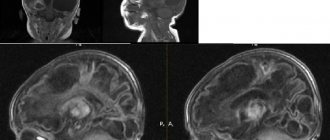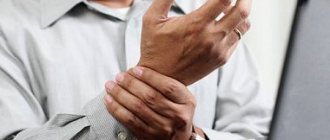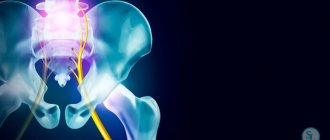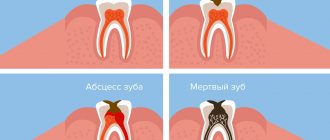Medical information is reliable Checked by Eremin Alexey Valentinovich
Hypersomnia is one of the types of sleep disorders. It is characterized by constant drowsiness throughout the day when the body should be awake. However, this condition is not explained by difficulty falling asleep or insufficient time of sleep at night. At Dr. Isaev’s Clinic, hypersomnia is treated using medicinal and non-medicinal methods. You can make an appointment with a doctor by calling the hotline. A psychiatrist's home call service is available for express examination and diagnosis.
General information about the disease
The duration of sleep for a mentally and physically healthy person is from 5 to 12 hours. This is an individual indicator depending on various factors. For some, 5-6 hours is enough to feel cheerful and rested the next morning, for others – at least 8 hours. In the process of diagnosing a pathological condition, the doctor will ask how the person felt before the disorder occurred. Perhaps this condition is caused by insomnia associated with stress or current life circumstances.
Prevention
It is impossible to predict with certainty when an attack will begin; each case is individual. You can only alleviate their course to some extent.
It is important to fulfill several conditions on which quality sleep and easy awakening depend:
- Night sleep lasts 8-9 hours. 8 hours is the minimum sleep time; 9 – maximum;
- the daily routine includes a short nap lasting 35-40 minutes;
- in the evening, activities that require physical or brain activity are excluded;
- Before going to bed in the evening, do not consume stimulating drinks, alcohol, dark chocolate, or any too heavy food.
You can learn to live with sleeping beauty syndrome. Over time, the symptoms subside and the march of the disease stops.
In all cases known and described in the literature, sleeping beauty syndrome went away on its own.
Classification of hypersomnia
Experts define two main groups of the disease. According to the frequency of manifestation, hypersomnia can be episodic and constant. In both the first and second cases, the causes of the disorder are different. Depending on the etiology, several types of pathology are distinguished:
- Lethargic.
It can last for a very long time; the minimum time a person stays in this state is 24 hours. Develops against the background of a disorder of the reticular formation of the brain or lethargic encephalitis. By external signs, it looks like the person is simply in deep sleep. At the physiological level, this manifests itself as follows - lack of reaction to sound, light, touch to any part of the body. Metabolism slows down, the skin becomes cold and pale, the pulse cannot be felt. In this state, there is no secretion of natural biological fluids, and the person has no need for food and drink. Lethargy is a very dangerous condition; in the old days, such patients were often buried alive. It was almost impossible to establish that they were in a state of sleep.
- Hysterical.
It is a peculiar reaction of the body to psychological trauma. A violent attempt to open the patient’s eyes meets resistance; the pupil reacts to changes in the light flux. It is impossible to wake up such a person; the sensitivity of his skin decreases. Blood pressure levels are normal, and increased muscle tone is observed. There is sweating of the hands and feet, and rapid heartbeat. When diagnosed using an EEG machine, all signs of wakefulness appear.
- Iatrogenic.
This type of drowsiness occurs when you take certain groups of medications. Usually this risk is specified in the instructions for their use. You should carefully read the recommendations and the risks indicated therein.
- Psychophysiological.
A type of hypersomnia occurs due to regular lack of sleep or chronic stress. It usually appears between the ages of 15 and 30, when social and professional activity increases. May be accompanied by wandering, short-term memory loss, and involuntary continuation of movements. This state lasts no more than a few seconds. Daytime sleep brings slight relief, but the patient does not feel alert and rested.
- Post-traumatic.
This pathology develops after a traumatic brain injury. A bruise, a blow or a fall from a height becomes a catalyst for mental changes.
- Medicinal.
A state of chronic sleep deprivation occurs due to the abuse of medications that have a sedative or calming effect.
- Psychopathic.
Pathology develops against the background of various mental disorders. Therapy for such disorders should be comprehensive, taking into account the clinical picture.
Sleep is an important part of human life and health. Its disorders often accompany somatic and neurological diseases, significantly worsening a person’s quality of life.
In addition to frequent sleep disorders, such as changes in its duration, difficulty falling asleep, etc., rare variants of sleep disorders are also encountered in clinical practice. Our article presents a clinical case of hypersomnia—Kleine-Levin syndrome (KLS).
Hypersomnia is a psychosomatic phenomenon that affects a person’s mental state, his thinking, intelligence, and emotional-volitional sphere [1].
In the modern classification of sleep disorders (ICSD-3ed, 2014), the hypersomnia section includes the following diseases [2]:
- narcolepsy type 1;
- narcolepsy of the second type;
- idiopathic hypersomnia;
— SKL;
- secondary hypersomnia; hypersomnia when taking medications or other drugs; hypersomnia in mental disorders;
- insufficient sleep syndrome.
As can be seen from the presented classification, a large group of hypersomnias of central origin is distinguished: narcolepsy of the first and second types, idiopathic hypersomnia and SCL. Drowsiness in other nosologies is largely secondary.
SCL also has such names as periodic hibernation syndrome, periodic hypersomnia syndrome, sleeping beauty syndrome. It is characterized by sleep attacks lasting hours or days, with an urgency onset and difficulty waking up [3].
The first clinical description of the syndrome in question was made in 1862 by Brierre de Boismont, who observed a boy with recurrent episodes of sleep, after which he sang loudly, played, and also had an increased appetite. W. Kleine in 1925 analyzed 9 cases of attacks of “periodic hibernation” in combination with endocrine and psychopathological disorders [4]. M. Levin in 1929 and 1936 observed 10 patients in whom “periodic hibernation” was combined with bulimia, and proposed to identify this syndrome as an independent nosological unit [5]. British neurologist M. Critchley reviewed 15 previously published cases and added 11 cases from his own observations, focusing on young marines in the British Royal Navy, where he served during World War II. In 1942, M. Critchley proposed an eponym for this condition - Kleine-Levin syndrome [6]. Subsequently, diagnostic criteria for SLS were established and changes were made to the International Classification of Sleep Disorders [7].
The exact distribution of SCL is unknown due to the fact that this syndrome is a rare disease and is not correctly diagnosed in all cases. According to various authors, the incidence of SCL is 1-2 cases per 1 million. Researchers [8] analyzed publications on SCL in PubMed for the period from 1962 to 2004 and found 186 cases of this disease. The presented cases of FLS have been reported throughout the world, but their incidence has been higher in Western countries. In Israel, as well as among American and European Jews, 1/6 patients with SCL have been reported [9]. It was also found [8] that men suffer from SCL more often than women (2:1), and the disease debuts mainly in adolescence. According to one meta-analysis [10], the average age of onset of the disease was 15 years (range 4 years–80 years), and in 81% of cases, SLS begins in the second decade of life. The provoking factors of SCL are the autumn (31.1%) or winter (31.1%) periods with the peak of the disease in December (14.8%). The majority of patients (89%) associated the onset of SCL with colds, alcohol consumption (23%), sleep deprivation (22%), stress (20%), physical activity (19%), travel (10%), and traumatic brain injury (9%), as well as with the use of marijuana (6%) [8].
The etiology of the syndrome is not fully understood. Some researchers associate SCL with neuroendocrine disorders. It is also assumed that its causes may be viral or post-infectious autoimmune encephalitis with predominant damage to the hypothalamus. The autoimmune theory is supported by the identification of leukocyte antigen ( English:
Human Leucocyte Antigens, HLA) DQB1*0602 [11]. Great importance in the pathogenesis of the disease is also attached to the role of certain neuropeptides (orexin, neuropeptide Y, leptins). Recent studies associate the development of SCL with apoptosis of orexin (hypocretin) neurons, which reduces the ability to awaken and shortens the REM sleep phase [12, 13]. Orexins (hypocretins) are a group of neuropeptides synthesized by neurons of the lateral hypothalamus, the axons of which reach almost all parts of the brain. Their main function is to maintain a state of wakefulness. Orexin deficiency leads to narcolepsy. Orexin-producing neurons regulate the activity of monoamine-producing neurons in a reciprocal manner. Monoamines excite the thalamus and cerebral cortex, maintaining a state of wakefulness. During sleep, there is a constant inhibition of orexin neurons by the ventrolateral nucleus of the preoptic area.
Currently, the following criteria for diagnosing SCL are accepted [14]:
A. The patient has had at least 2 recurrent episodes of excessive sleepiness and prolonged sleep, each lasting from 2 days to 5 weeks.
B. These episodes usually occur more than once a year and at least once every 18 months.
C. Between these episodes, the patient has normal cognition, behavior, mood, and alertness levels.
D. One of the following occurs during the episode:
1. Impaired cognitive functions.
2. Impaired perception.
3. Eating disorder (anorexia or hyperphagia).
4. Disinhibited behavior (such as hypersexuality).
E. Hypersomnia and its associated symptoms are not explained by the presence of another sleep disorder, other physical, neurological or psychiatric condition (especially bipolar affective disorder), or the use of medications or other medications.
With polysomnographic monitoring during an episode of illness, the following features can be established: high sleep efficiency; reduction in the duration of the 3rd and 4th phases of sleep; reduction in sleep phase delay (the main period of sleep is delayed relative to the desired time, which leads to difficulties falling asleep or waking up at the desired time) and the REM latency period; multiple sleep latency test
multiple sleep latency test, MSLT) with an average sleep waiting time of less than 10 minutes, the biological need for sleep can be assessed, i.e. the duration of sleep that the body needs at the moment. This is a series of 4-5 short attempts to fall asleep during the day, separated by a 2-hour interval, starting 2 hours after waking up in the morning. The average latency to sleep (the average time of each attempt to fall asleep from the beginning to the onset of sleep), as well as the absence or presence of the onset of REM sleep (from the beginning of any stage of sleep to the onset of REM sleep) are determined. An average sleep latency of less than 10 minutes is pathological and conditionally corresponds to moderate hypersomnia (sleep latency 5-10 minutes) and severe hypersomnia (sleep latency less than 5 minutes).
Patients with SCL have changes in the electroencephalogram (EEG) in the form of a nonspecific diffuse slowing of background activity to 7-8 Hz; low-frequency high-amplitude waves (delta or theta) are less often recorded bilaterally in the temporal or temporo-parietal areas. Sometimes isolated discharges of spikes, random photoparoxysmal reactions and sharp waves are observed [15, 16].
Single photon emission computed tomography can detect significant hypoperfusion in the hypothalamus, thalamus and basal ganglia [17].
In the International Classification of Diseases, 10th Revision, FLS is considered a disease of organic origin and is classified in Chapter VI “Diseases of the nervous system” (G47.8).
We, at the neurological department of the clinic of the Bashkir State Medical University, screened patients to identify the prevalence of sleep disorders. The study was of a single-stage prospective nature. Using a special questionnaire, 42 patients (30 men and 12 women) aged from 29 to 59 years (average age 45.9±1.5 years) were interviewed. Based on the results of the survey, it turned out that 23 (55%) of the respondents noted problems associated with falling asleep and maintaining sleep, 6 (14%) had excessive sleepiness, sleep apnea syndrome was recorded in 1 patient, 12 (30%) had no problems with sleep patients. The data obtained indicate that the vast majority of patients in the neurological department had some kind of sleep disturbance. Among them there was a case of SCL, which is described below.
Patient F.
, 22 years old, was admitted for treatment to the neurological department of the clinic of the Bashkir State Medical University on the direction of a psychiatrist. Prior to this, he was sent to the inpatient department of the Republican Clinical Psychotherapeutic Center with a diagnosis of depression. According to the mother and from the accompanying documentation, it is known that heredity is not burdened. Born from the second pregnancy, without complications. He grew and developed in accordance with his age. I went to school at the age of 7 and studied well. Of the diseases suffered, only colds were noted. Currently works as a programmer. Lives with parents.
He has been suffering from episodes of sudden onset drowsiness since the age of 14, when for the first time, against the background of an acute respiratory viral disease, he began to notice sudden drowsiness during the day, which did not allow him to engage in daily activities. The average duration of an episode of drowsiness is 10 days. The frequency of episodes is 2 times a year. In general, all periods of increased sleepiness proceeded in a stereotypical manner. A few days before the onset of sleep, the patient felt general weakness and became uncommunicative. They repeatedly turned to neurologists and were treated in somatic hospitals, sometimes independently, during periods of drowsiness, they took vasoactive drugs, but the average duration of drowsiness did not change. According to relatives, when trying to wake the patient, episodes of irritability were observed. He was repeatedly treated in the psychoneurological department with anxiety-depressive syndrome.
The examination revealed that the patient has normal body weight (body mass index 24.2), height, and proportional ratio of body parts. No pathology was detected in the somatic status.
Mental status: oriented towards one’s own personality. Partially oriented in location and time. Outwardly neat. Orderly in behavior. Contact with the patient is unproductive. Answers questions with difficulty, without desire, shows passive negativism - turns away and falls asleep. When activated (multiple repetition of a question, encouragement to action), he gets up and can perform tasks: answer a question, eat, go to the toilet. Thinking in slow motion. Attention scattered. It is not possible to check intellectual-mnestic functions due to the patient’s condition. Denies suicidal intentions. Criticism of the condition has been reduced.
The patient was examined by a psychiatrist twice, and before the episode of hypersomnia, no signs of mental illness were identified, which met the diagnostic criteria for SLS: hypersomnia is not associated with other medical or mental disorders, such as epilepsy or depression [14].
Obstructive sleep apnea syndrome was excluded because the patient did not experience snoring and/or complete or temporary disruption/cessation of respiratory airflow during sleep; Daytime sleepiness prevailed only 2 times a year, which is typical for SCL.
The neurological status also did not reveal any focal neurological deficit.
No deviations from the norm were found during standard clinical and laboratory examinations. Magnetic resonance imaging of the brain (device power 1.5 T) was also within normal limits. The EEG showed minor changes in the form of a nonspecific diffuse slowing of background activity to 7-8 Hz, which is consistent with the data in the relevant literature [15].
During his stay in the hospital, the patient was predominantly asleep (more than 90-95% of the time of day), the skin at this time had a physiological color, even breathing, pulse 67 beats/min, blood pressure 110/70 mm Hg. The patient periodically woke up to perform physiological needs, and could wake up in order to eat. At the same time, relatives and medical personnel noted an increased appetite. He did not perform any other activities, did not express any interests or desires. During episodes of awakening, for example, to eat, he could communicate, answering questions in monosyllables. There was a single episode of behavioral disorder of a hypersexual nature.
Based on the results of observation and examination, the patient was diagnosed with SCL. Ten days after the onset of the hypersomnia episode, the patient was fully awake. He was amnesic for most of the period of hypersomnia, and therefore tried to clarify the details of his actions at that time.
Thus, the patient was diagnosed with repeated episodes of hypersomnia in combination with bulimia, amnesia, and a single episode of a hypersexual nature. It was established that these paroxysms had no connection with other diseases. As stated above, the patient was diagnosed with SLS.
No specific treatment for SCL has been developed. In the cases presented in the literature, the use of drugs from various groups by patients with SCL was generally ineffective. In most cases, SLS has a benign course with spontaneous disappearance of hypersomnia, although isolated cases of the disease lasting up to 18 years have been described [16, 17].
The authors declare no conflict of interest.
The authors declare no conflicts of interest.
Information about authors
information about the authors:
Akhmadeeva L
.
R
. — e-mail; https://orcid.org/0000-0002-1177-6424
Derevianko X
.
P
. — email
How to quote:
Akhmadeeva L.R., Derevyanko H.P. Sleep disorders in a neurological hospital and Kleine-Levin syndrome. Journal of Neurology and Psychiatry. S.S. Korsakov
. 2019;119(7):83-86. https://doi.org/10.17116/jnevro201911907183
Corresponding author:
Derevianko Khristina Petrovna — e-mail
Causes of hypersomnia and risk factors
A common group of prerequisites for the development of this disease is dysfunction of the central nervous system. In some cases, obvious neurological disorders are secondary; mental illnesses are behind them.
This condition often occurs in healthy people as a response to psycho-emotional stress or exposure to a strong stress factor. Often, patients at a doctor’s appointment can voice a cause-and-effect relationship between their illness and a previous traumatic event.
Among the most common causes of hypersomnia are:
- chronic diseases of the cardiovascular or endocrine system (hypothyroidism, diabetes, hypertension);
- traumatic brain injuries;
- malignant tumors in the brain;
- neurasthenia, depersonalization, schizophrenia, dissocial personality disorder and other mental disorders;
- cerebrovascular accidents in the acute phase;
- failure of the mechanisms regulating sleep and wakefulness;
- as a side effect of certain medications;
- severe stress (sharp change in life scenario, military operations, life-threatening natural disasters;
- dysfunction of the hypothalamus;
- imbalance of neurotransmitters;
- diseases of brain tissue caused by viruses or bacteria (meningitis, encephalitis).
The patient may experience panic attacks, their cause is the fear of another attack approaching.
Jarcho-Levin syndrome. Symptoms and manifestations
Jarcho-Levin syndrome is characterized by multiple skeletal deformities, fusion and/or underdevelopment of the vertebrae, small, malformed or missing ribs and a small chest cavity, therefore the child is at high risk of developing repeated and severe lung infections (pneumonia). As a result of such developmental problems, the neck and torso will be short, which can lead to dwarfism. The toes are usually webbed.
In addition, children with this syndrome may have other features such as a wide forehead, wide nasal bridge, anteversion of the nostrils, and a prominent occiput. Sometimes, gastric and pelvic bloating can occur due to bladder obstruction. Undescended testicles, absence of external genitalia, double uterus, anal atresia, and defects in brain development may also be present.
Hypersomnia syndromes
Experts identify several types of the disease, which differ in clinical signs.
Narcolepsy
The patient has an irresistible desire to fall asleep, and it does not matter where this happens. This could be a cafe, a store, an office at work, a gym. The disorder is characterized by paroxysmal character. The patient falls into a short sleep, not having time to take a comfortable position.
As the pathology develops, he may feel the first signs of an upcoming attack. This will help him prepare - take the appropriate body position or find a suitable place. The situation becomes more complicated if the patient experiences hallucinations. Brief visions occur while falling asleep and at the moment of full awakening. A person with hypersomnia experiences a state of catalepsy. Within a few minutes after waking up, increased tone of all muscles is observed. The patient cannot move either his arm or his leg.
Kleine-Levin syndrome
A person constantly wants to sleep and can go to bed anywhere. The secondary disorder is bulimia. Before an attack, the patient begins to eat everything in large quantities. He cannot stop, and a violent attempt to take food from him leads nowhere. Muscle tone increases, the person becomes very strong and actively resists. This disorder is usually diagnosed in young patients.
Before the onset of an attack, prolonged insomnia or severe psychomotor agitation is observed. The duration of this condition ranges from several days to 2-3 weeks. A person wakes up on his own, but at the same time feels confused. He doesn't always understand what happened to him. If you forcefully wake him up, he may show signs of aggression.
Pickwickian syndrome
This is another form of hypersomnia, which is characterized by a combination of several disorders. In addition to the constant desire to sleep, breathing problems are observed, and obesity is also diagnosed in such patients. It occurs against the background of uncontrolled eating in large quantities. Even if a night's sleep lasts at least 8 hours, a person feels empty and overwhelmed in the morning. It is characterized by constant headache.
Sleepy intoxication syndrome
After the patient suddenly falls asleep, he wakes up and feels very bad. In the first 15 minutes after waking up, there may be signs of confusion. This condition can last up to 2 hours.
How it manifests itself
Representatives of any race and any nationality are susceptible to the disease. Moreover, the largest number of cases was recorded among Ashkenazim.
Sleeping beauty syndrome is a disease of the young. It appears at puberty and is most often observed in teenage boys 12-16 years old. In girls, it occurs less frequently and is associated with surges in progesterone levels.
With the completion of hormonal changes in the body, all symptoms, as a rule, disappear. As a rule, because a case of the disease was recorded that lasted 18 years.
Sleep can last 16, 18, 20 hours. Its longest duration was 6 weeks. The frequency of episodes of drowsiness has not been established. The attacks can follow one after another, and can be weeks or months apart.
At the end of the sleep episode, the person is overtaken by a bout of gluttony. The appetite after waking up is indomitable, the patient eats everything that “comes to hand” in unlimited quantities. At this moment, there are no taste preferences; even those foods that previously caused persistent disgust are absorbed.
Despite all this, eating food in gigantic quantities does not bring either satisfaction from its taste or a feeling of fullness. Moreover, sometimes completely inedible objects are used.
Attempts to wake the person are unsuccessful. If, nevertheless, the patient can be forcibly brought out of the state of sleep, upon awakening he becomes angry and aggressive.
In this state, the patient swears and insults loved ones, but cannot cause significant physical harm due to a constant feeling of fatigue and weakness.
During the “sleep-wakefulness” period, the patient experiences unclear and confused consciousness, lacks logical thinking, and experiences disorientation in space and time.
In addition to other disorders, amnesia occurs for recent events; firmly acquired information is either completely erased from memory or reproduced with great difficulty.
In some patients, persistent visual and auditory hallucinations appear in the period of time between sleep and wakefulness.
As a rule, a person is haunted by ideas that they want to kill him, poison him, or cause physical harm. Everyone around you is perceived as enemies.
The patient becomes distrustful and suspicious of those closest to him.
A specific manifestation of the disease is sensitivity to minor stimuli. While awake, noise outside the window, loud conversation, too harsh and bright light cause discontent and aggression.
Men suffering from Kleine-Levin syndrome may experience sexual behavior disorder. Cases of hypersexuality and sexual harassment have been reported.
As symptoms subside, all cognitive abilities are fully restored. Both mentally and physically people look completely healthy and can lead a completely normal life.
Diagnosis of hypersomnia
Patients do not always realize that they have health problems. They cannot objectively assess what exactly is happening, what type of disease is inherent in them based on the symptoms they exhibit. Specialists use the following diagnostic methods:
- Stanford Sleepiness Scale.
- Sleep latency test.
- Assessment of physical condition (presence of concomitant diseases).
- Study of qualitative and quantitative indicators of sleep using special equipment.
In some cases, consultation with a psychotherapist is required. This is relevant if the patient has suffered a traumatic situation or has any other negative experience that has caused sleep disturbances.
Diagnostic methods
The diagnosis and treatment of this syndrome is carried out by a neurologist, but consultation with a psychotherapist, endocrinologist, somnologist, infectious disease specialist, and other specialists may be required.
It can be differentiated from bulimia by the presence of attacks of pathological sleep and the nature of emotional and mental symptoms.
In addition to bulimia, it is necessary to distinguish the syndrome from epilepsy, narcolepsy, depression, and lethargic encephalitis.
Diagnosing the disease is not difficult by analyzing the clinical picture. There is no need to undergo numerous examinations. In some cases, the doctor may prescribe:
- Polysomnography;
- PEC-CT of the brain;
- electroencephalography;
- recording on a polygraph for positron emission brain scanning.
Treatment of hypersomnia in Moscow
Hypersomnia is a separate diagnosis. It is necessary to conduct a thorough examination of the patient so as not to confuse it with depression, asthenia or chronic fatigue. Additionally, a consultation with a neurologist, ophthalmologist, endocrinologist, gastroenterologist, or cardiologist may be prescribed. The diagnosis is made if the signs of the disease are persistent and observed for at least one month.
Treatment of hypersomnia in Moscow at Dr. Isaev’s Clinic is carried out comprehensively. Medications with a specific spectrum of action are used to eliminate symptoms and normalize sleep and wakefulness. Drug therapy includes the following medications:
- antibiotics – if the disease occurs due to viruses or infections entering the body;
- drugs that restore the balance of brain neurotransmitters;
- nootropic substances – prescribed in the presence of organic pathologies in order to improve brain function;
- medications aimed at correcting endocrine, somatic and oncological diseases;
- psychostimulants – medications that eliminate excessive sleepiness during the day;
- antidepressants - their use is justified in the presence of symptoms of catalepsy and chronic depression;
- sedatives that calm the nervous system;
- immunostimulants – these drugs awaken the body’s internal reserves, improve the functioning of all systems;
- vitamins are prescribed as maintenance therapy.
The use of any medications should only be done under the supervision of a physician. He takes into account the patient’s condition and adjusts the dosage of active substances. The type, duration and frequency of hypersomnia attacks are important.
Treatment of this disease without the use of drugs is also possible. This is relevant if the cause of the development of pathology is psychotrauma. Individual sessions with a psychologist are aimed at teaching patients the following skills:
- resistance to stress factors, regardless of their intensity;
- managing negative emotions;
- communication with others without conflicts;
- constructive problem solving;
- relieving muscle and emotional tension with the help of painting, music, and other techniques.
It is important to maintain a sleep schedule; night rest should last at least 8 hours. It is advisable to wake up and go to bed at the same time, turning evening going to bed into a kind of ritual. It is not recommended to watch TV, use a mobile phone or computer 2 hours before going to bed.
Getting rid of bad habits is the primary task of a patient suffering from hypersomnia. Moderate physical activity and sports are encouraged to avoid overworking the body.
Prognosis after treatment
Properly selected drugs and methods of drug therapy help get rid of this disease. In most cases, the prognosis is favorable, and the patient feels well at the end of the course. He gets enough sleep at night and does not experience drowsiness during the day.
It is important to consult a doctor in time, as this disease has several adverse consequences:
- worsening chronic diseases;
- violation of adaptation in society;
- decreased performance;
- deterioration of social interactions, including professional ones.
Treatment
Due to the fact that the causes and mechanisms of development of SCL are unknown, there is no treatment protocol. We can only talk about symptomatic and palliative (supportive) therapy and psychological assistance.
Psychological treatment
Psychological treatment methods are effective for mild forms of the disease; they not only reduce periods of drowsiness, but also support the patient:
- Psychoanalysis. A long-standing and widely used practice based on Freud's theory and teachings about the combination of the conscious and unconscious, about secret sexual desires and hidden experiences. The psychotherapist invites the patient to express everything that torments or has once tormented him. In such frank conversations, the patient shares everything intimate, hidden even from close people. Analysis of hidden experiences allows us to identify the root cause of the disease.
- Art therapy. Treatment with creativity. It has proven very good in the treatment of children. This includes drawing, modeling, puppet therapy, when the psycho-emotional state is corrected with the help of puppet theater.
- Symboldrama or waking dreams. The patient is given a certain topic-task, a certain life situation from which several ways out can be found: tragic, dramatic, optimistic. Based on which exit the patient chooses, it becomes clear whether he needs psychological help.
Drug therapy
Taking medications is advisable in severe cases of the disease. In medical practice, nootropics, psychostimulants, and mood stabilizers are used:
- Psychostimulants. Stop attacks of drowsiness. The most commonly used medications are the caffeine group.
- Nootropics class drugs. They improve metabolic processes in brain tissue, strengthen memory, stimulate mental activity, and improve cerebral circulation.
- Normotimics. They reduce irritability, stop aggressiveness and hot temper, and remove the feeling of hostility towards others. And, on top of everything else, they correct the “sleep-wake” pair. The most widely used drug in this group is lithium carbonate, which has a pronounced antipsychotic effect.
For mild SCL, the use of medications is undesirable. This is due to the fact that the disease tends to fade naturally.
The use of nootropics and psychostimulants will do more harm than good due to the mass of side effects.
Treatment of hypersomnia reviews
It is important for every patient to see an experienced specialist. Our clinic has created all the conditions for patients to undergo treatment in comfortable conditions. The wards are equipped according to European standards, the meals are complete and balanced.
Reviews from other patients will help you navigate the choice of a medical institution. We do not influence the information posted on this page in any way. You can be sure that you will get other people's unbiased opinions. If you do not find the information you are looking for, call the hotline. The specialist on duty will answer all your questions and, if necessary, make an appointment with a doctor.
Questions and answers
Is it possible to treat excessive sleepiness at home?
No. A patient with hypersomnia cannot independently assess the severity of his disease, diagnose its form, or prescribe symptom correction.
Will the symptoms of the disease go away after taking antidepressants?
These drugs will improve the condition only if they are prescribed to the patient by a doctor in the presence of concomitant pathologies. Antidepressants are not used as a stand-alone medication for the treatment of hypersomnia. If prescribed incorrectly, they will harm the body and worsen the prognosis of therapy.
Jarcho-Levin syndrome. Causes
Jarcho-Levin syndrome has two forms. SCDO1 is caused by an abnormality in the DLL3 gene (the gene is located on chromosome 19 at the 19q13 locus). SCDO2 is caused by an abnormality in the Mesp2 gene, located on chromosome 15 at the 15q26.1 locus.
- Lethal dysplasia. A progressive genetic disorder characterized by severe growth deficiencies, a large head (hydrocephalus), a low nasal bridge, and a small face. This syndrome also causes a small chest with short ribs, short flattened vertebrae, renal obstruction (hydronephrosis), and anal atresia.









